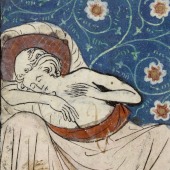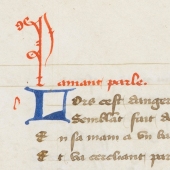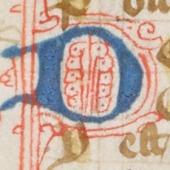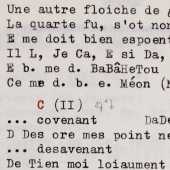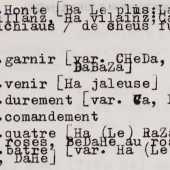The Romance of the rose
The moving word
The Romance of the rose was undoubtedly one of the best known, most admired and most imitated texts of the French Middle Ages. While most medieval vernacular texts survive in just a handful of manuscripts, the Rose is preserved in nearly three hundred.
This monumental allegorical love poem is the work of two authors: the first 4,000 lines were written by Guillaume de Lorris (c. 1225–1245) and the concluding 18,000 by Jean de Meun (c. 1268–1285). It tells the story of Amant (the Lover) who falls asleep and dreams that he enters a beautiful garden. Sheltered under a towering pine is the fountain in which Narcissus drowned himself. When the Lover gazes into it, he is inflamed by desire for a rosebud he sees reflected in the water. He meets a series of allegorical figures, from Fair Welcome to Reason to Foul Mouth, and other characters, including the goddess Venus, who help, thwart and harangue him. He finally manages to pluck the rose in what is a violent, even rape-like sexual conquest, and the poem ends as the victorious Lover awakens from his dream. At times serious, at times irreverent, often very funny, the Rose is open to wildly differing interpretations. It is encyclopaedic in scope, treating everything from love and free will to the best way to cope with bad breath.
View a video introduction to MS Gg.4.6, an exhibit in ‘The Romance of the rose‘ here.

